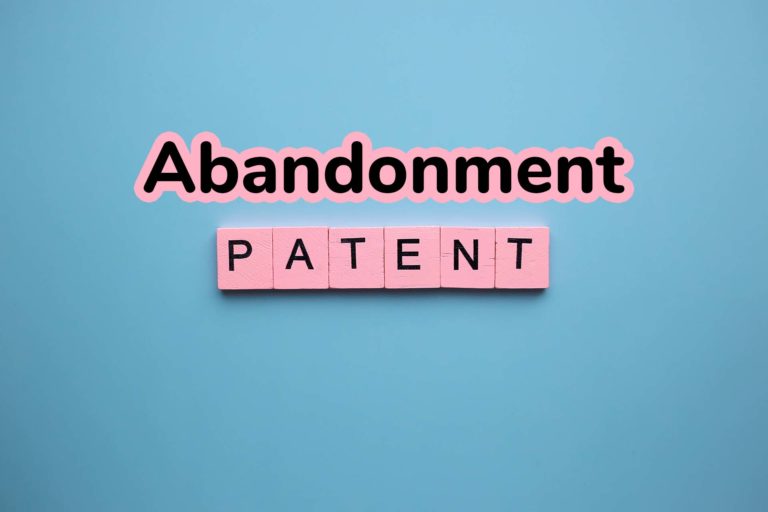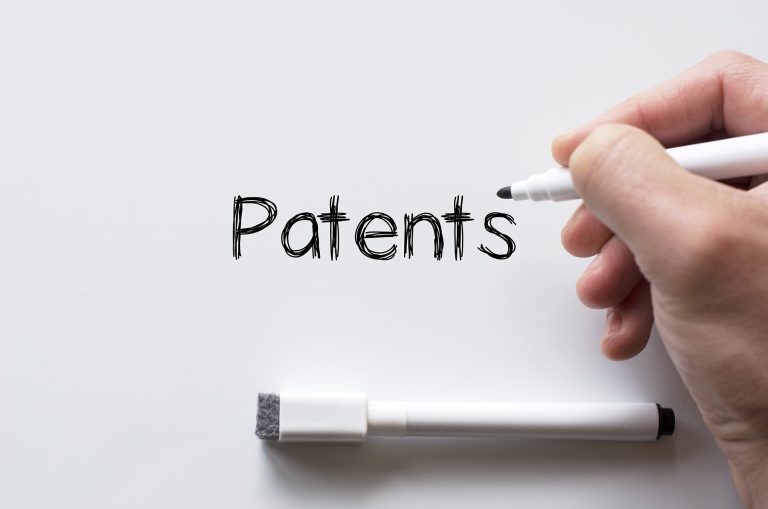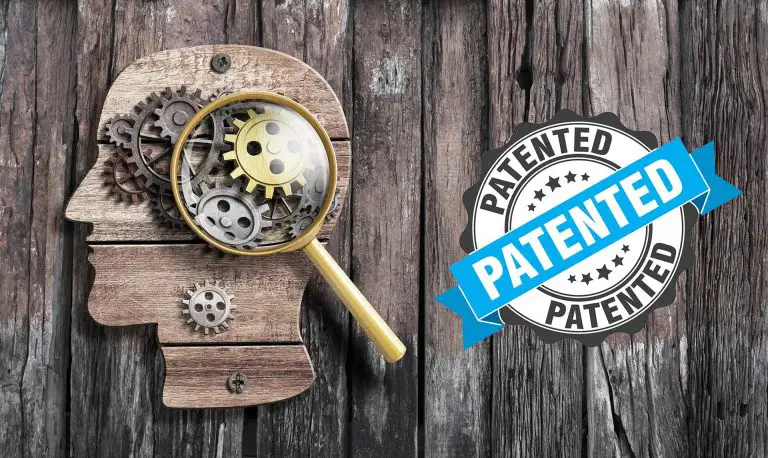How to Get a Patent | Complete Guide
If you have an invention or idea you’re probably wondering “How do I get a patent?” You’ve come to the right place, we will explain the different types of patent available to you, as well as how much they cost, how you can get one, and the stops on how to file a patent application with the USPTO. This article will also cover how to get a utility patent, design patent, and provisional patent.
If you have a great idea that you believe may be commercially successful once it’s produced, you mat be asking yourself how you can protect that idea or invention from those who may steal your idea and copy it?
The short answer is that you can protect yourself by patenting your invention. Patent protection allows you to restrict others from using, making, or selling your invention or product.
How Do I Get a Patent?
To get a patent you need to satisfy the requirements set forth by the USPTO. This means that your invention has to (1) have patentable subject matter, (2) your invention must be useful or serve some purpose, (3) it has to be novel (new), and (4) it must not be obvious.
Once you know that your invention or idea meets the requirements mentioned above, you can get a patent by filing an application with the United States Patent and Trademark Office (USPTO).
Filing an application is a complex process that typically requires the help of a trained professional. That said, it’s not unheard of to find someone who has successfully patented their invention on their own.
Different Types of Patents that you Can Get
Patents are a form of intellectual property rights granted to inventors to give them a monopoly over their invention for a limited period of time, usually up to 20 years for utility patents. Patents give patent owners the right to restrict others from using, making, or selling their invention without their permission.
You can get five types of patents from the USPTO:
- Utility Patents. These are the most common type of patent applied for at the USPTO, making up more than 90% of patent application. Utility patents protect the functional aspect of an invention.
- Design Patents. Design patents protect the aesthetic or ornamental appearance of a functional item. You can use design patents to protect things like the look of beverage bottles and jewelry.
- Provisional Patents. If you don’t have the money or are not ready to file a regular patent application, you can file a provisional patent application to secure an early filing date. Once you round up some investors or complete work on your invention, you can file your non-provisional (regular) patent application.
- Software Patents. If you’re looking to protect your software, you will need to apply for a utility patent to protect the functional aspects of your new software.
- Plant Patents. These patents protect new species of asexually reproduced plants, such as flower or vegetables.
Why Should you Get a Patent?
You should get a patent for a number of reasons. If you want to profit from your patent you will need to protect your invention. Patents will give you the ability to prohibit others from making, selling, or importing your invention to the United States.
Patents also give you priority over people who seek to patent an invention that’s the same or similar to yours. When you’re the only person or business selling your invention, you might be able to corner the market and make tremendous amount of profits. Without patent protection, your competitors might replicate your product and compete with you. If you’ve patented your invention and someone else copies it, you can sue them for patent infringement and prohibit them from selling or making your invention.
Another reason you should get a patent is that you can market yourself or your business as an innovator that has developed inventions worthy of a patent from the USPTO. Having a patent can attract investors to invest in you or your company in exchange for the right to use a particular patent or set of patents.
Why Should you Not Get a Patent?
Although the benefits of getting a patent outweigh the negatives, we are going to share with you a couple of disadvantages of getting a patent.
If you get a patent, you will have to disclose specific, technical information about your patent to the public. This is a problem in circumstances where you want to keep some details about your invention secret.
Also, getting a patent is quite costly whether or not you succeed in getting your patent. The average cost to have an attorney file a patent application is around $7,500 for a simple invention. The price only goes up the more complex your invention.
Once you’ve filed for and been granted a patent, you can just sit back and expect the USPTO to enforce your patent. You will have to proactively look for and go after those who infringe upon your patent. To do so you’ll likely need the assistance of a patent attorney and if you’ve ever dealt with one, you know how expensive they can be.
How to Protect Your Invention Before you Get a Patent?
You can protect your invention before you get a patent by keeping your invention a secret. For example, if you’re working on your invention and you need the assistance of a third part, you can ask them to sign a confidentiality agreement. That said, confidentiality agreements aren’t foolproof but they will reduce the possibility of your invention being stolen.
If someone breaks the confidentiality agreement by either stealing your idea or disclosing it to someone else, you will be able to take legal action against them. An attorney can draft a simple confidentiality agreement that will hopefully protect your invention.
What to do Before you Apply to Get a Patent?
Getting a patent can be costly and time consuming, so before you apply to get a patent, you might want to do some research to see if someone else has already patented your idea or invention.
Do the following before you begin the process to get a patent:
- Begin by searching the USPTO patent database or any other patent search tools. We personally like Google Patents, the database is easy to use and most importantly it’s free. Also, you might want to search the database for applied for patents to make sure that there is no one in the process of patenting an invention that’s similar to yours.
- Search Scientific Publications relevant to the field of your invention. You may also want to conduct an international patent search. After finishing your research you should know more about your patent, as well as similar patents that are out there.
- If you find that conducting a patent search is overwhelming, you can always hire a patent attorney that can help you with your patent search.
- While you’re conducting your research, make note of inventions that are similar to yours, write down any differences between the two inventions. If you find that an invention is really similar to yours, it’s a good idea to write down a detailed explanation how your invention is different or how it improves upon existing inventions.
Are you Ready to Get a Patent?
To get a patent, you have to have something that’s more than just an idea. While you don’t need a fully-functional prototype to patent your invention, you need to be able to provide the USPTO with a detailed description of how your invention works.
When filling out your patent application, you will need to provide enough details about your invention so that someone with average skills in the field of your invention would be able to understand and produce your invention.
If you’ve been tirelessly working on your invention, but you haven’t perfected it yet, you can file a provisional patent application with the USPTO. The provisional patent application will allow you to secure an early filing date and will give you the ability to label your invention as “patent pending.“
Patent pending status will place your competitor’s on notice that you’re actively seeking to protect your invention. Also, if you’re looking for investors, patent pending status will show them that you have invented something that’s worth patenting.
That said, provisional patent applications only last for 12 months from the date you file it. To get a patent, you’ll need to file your non-provisional patent application within that 12 month period. If you fail to file a non-provisional patent application, the USPTO will consider your application as abandoned, and you will not be able to use patent pending on your product or invention.
While the provisional patent application does not require as much detail as a regular patent application, to get a provisional patent you will need to provide a description of your invention. Again, we have to remind you that provisional application only last for 12 months, they cannot be extended, so make sure you wrap up work on your invention within that time and that you file a non-provisional patent application to get your patent.
Can you Get a Patent Without an Attorney?
We personally know several inventors who have successfully navigated the U.S patent system to get their inventions patented. The good news for someone who wants to get a patent on their own is that the USPTO is required to help individual inventors who want to get a patent without an attorney’s help.
Like we said previously, to get a patent you must make sure that your invention qualifies for a patent. Once you’ve done, you should file out your patent application and file it with the USPTO. Patenting an invention is not extremely hard, but it is somewhat complicated, you have to follow the rules very carefully.
If you do not follow the rules carefully, the USPTO may reject your patent application for seemingly minor mistakes. While there are some people who will tell you that you cannot get a patent without the help of attorney, they are mistaken, it just a skill that you need to develop.
That said, hiring an attorney can save you a lot of the heartache involved with filing your patent. Attorneys already know how to do the required research to get you the best possible patent protection.
Steps to Get a Patent
1) Describe Your Invention
The first hurdle you need to pass when seeking a patent is describing your invention. The USPTO does not allow people to patent only ideas. You need to explain how your invention works. You should explain what makes your invention new and how it’s useful (i.e., what purpose does it serve or what problem does it address).
Once you have described your inventions, think about ways you can improve your invention. The more you know about your invention, the more you can protect. Also, think about the applications for your invention. Answering these questions will help you search for similar inventions and will allow you to protect the full scope of your invention.
2) Consider Whether your Invention will be Commercially Successful
Before submitting a patent application to get a patent, do some market research to see if anyone is interested in your invention. If you find someone who is interested in your invention and there’s a market for it, it would make sense to invest your time and money in applying for a patent.
3) Choose the Appropriate Type of Protection
If for whatever reason you’re not quite ready to file a full patent application, you can start off by filing a provisional patent application. Provisional patents give you a year to perfect your invention. Maybe there’s something that’s not working 100% the way you want, you can file a provisional application and once you’ve perfected your invention, you can file a regular (nonprovisional) utility patent application.
When looking at options to protect your invention, you may also want to protect the distinctive aesthetic features of your invention. You can do so by filing a separate design patent application with the USPTO.
As a reminder, utility patents protect the functional aspects (how your invention works) while design patents protect the unique look of your invention. Seeking both is a smart idea and will add value to your invention.
4) Fill Out & Submit Your Patent Application
This is the most important part of the process. The USPTO has a lot of rules that must be followed when filling out your patent application. Provisional applications are less complicated to fill out because they act as placeholders for the regular patent application. If you need help drafting your patent application, you can always seek the help of a patent attorney, but they don’t come cheap. For a simple invention, expect to spend around $4,000 on an attorney who will draft and file your patent application. The $4,000 does not include filing fees. Filing fees will cost you another $75just to file your application.
5) Track the Status of Your Application
The USPTO currently has a backlog of patent applications, so don’t expect to hear back from them for over a year. You should check the status of your application once or so a month to make sure that they don’t need anything from you. Also, once a patent examiner is assigned to your application, they might approve it or reject it. If they reject your application, you will usually have an opportunity to file a response arguing against their reason for rejection.
How Much Does it Cost to Get a Patent?
If you are a small inventor who wants to patent his new invention, here are is an example of the costs you may encounter to get a patent with the help of an attorney:
- Patent Search by an attorney: $2,000
- Filling out and preparing a provisional patent application: $2,500
- Filing the patent application with the USPTO: $140
- Non-provisional patent application after a provisional patent application: $10,000
- Filing Fee for the non-provisional patent application: $150
- Illustrations for non-provisional patent application: $500
- Total Cost: $15,290
As you can tell, a significant portion of the cost to get a patent is the lawyer fees. If you want to go the do-it-yourself route, you could save a lot of money. Just remember that applying for a patent requires attention to detail, if you fit that description, you may be able to get a patent on your own.
How do you Get a Patent
We hope that this article helped answer some of the question that you have about how to get a patent, as well as how much it costs to get a patent. We listed the steps that you need to take to get your invention patented, as well as why you should patent your invention. If you have any questions or comments, please leave them in the comments section below.







